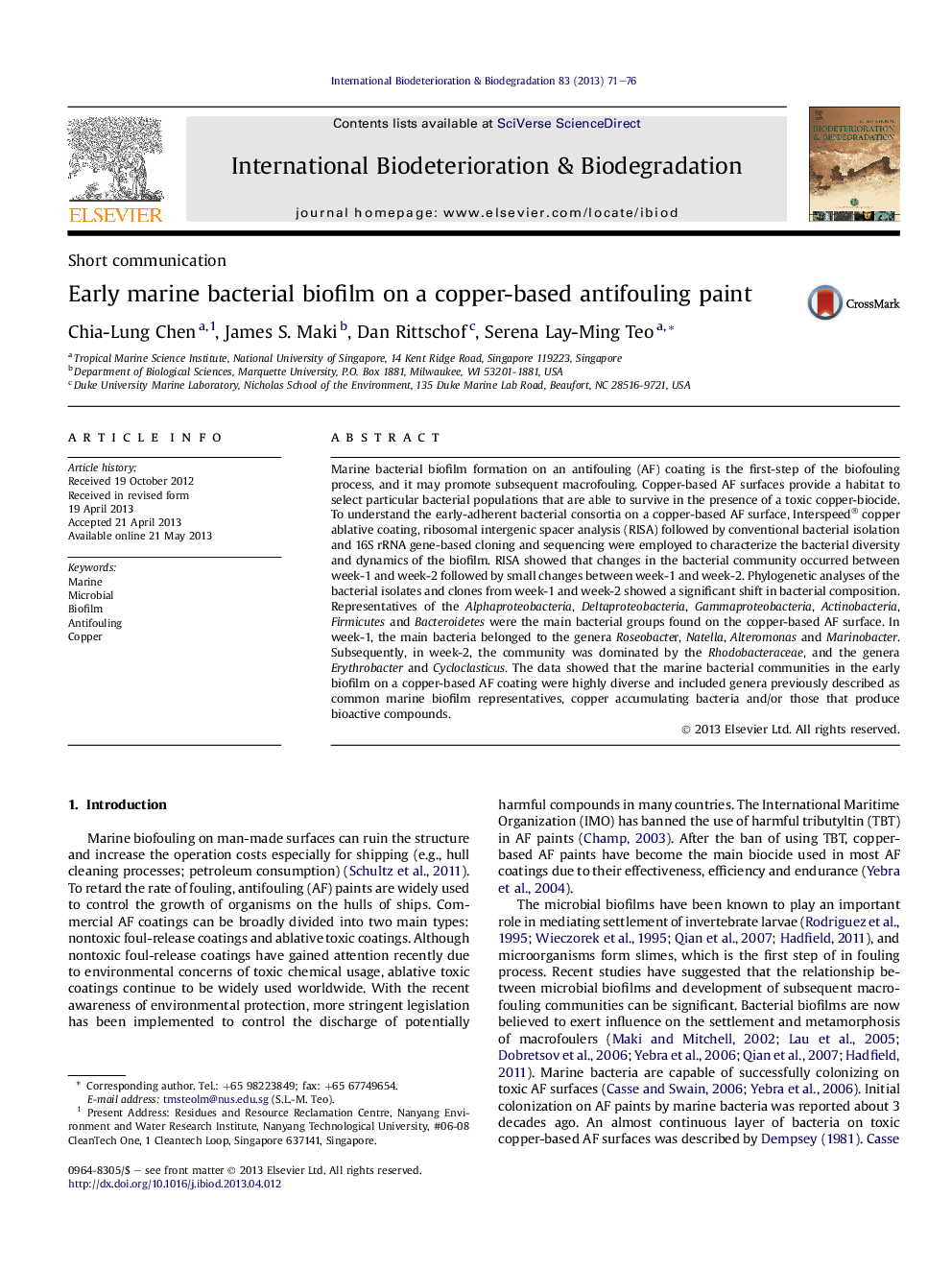| کد مقاله | کد نشریه | سال انتشار | مقاله انگلیسی | نسخه تمام متن |
|---|---|---|---|---|
| 4364884 | 1616332 | 2013 | 6 صفحه PDF | دانلود رایگان |

• Early adherent marine bacterial diversity on copper antifouling paint immersed in tropical coastal sea is reported.
• Major changes in the bacterial community occurred in the first two weeks of immersion.
• Alphaproteobacteria, Deltaproteobacteria, Gammaproteobacteria, Actinobacteria, Firmicutes and Bacteroidetes were main groups.
Marine bacterial biofilm formation on an antifouling (AF) coating is the first-step of the biofouling process, and it may promote subsequent macrofouling. Copper-based AF surfaces provide a habitat to select particular bacterial populations that are able to survive in the presence of a toxic copper-biocide. To understand the early-adherent bacterial consortia on a copper-based AF surface, Interspeed® copper ablative coating, ribosomal intergenic spacer analysis (RISA) followed by conventional bacterial isolation and 16S rRNA gene-based cloning and sequencing were employed to characterize the bacterial diversity and dynamics of the biofilm. RISA showed that changes in the bacterial community occurred between week-1 and week-2 followed by small changes between week-1 and week-2. Phylogenetic analyses of the bacterial isolates and clones from week-1 and week-2 showed a significant shift in bacterial composition. Representatives of the Alphaproteobacteria, Deltaproteobacteria, Gammaproteobacteria, Actinobacteria, Firmicutes and Bacteroidetes were the main bacterial groups found on the copper-based AF surface. In week-1, the main bacteria belonged to the genera Roseobacter, Natella, Alteromonas and Marinobacter. Subsequently, in week-2, the community was dominated by the Rhodobacteraceae, and the genera Erythrobacter and Cycloclasticus. The data showed that the marine bacterial communities in the early biofilm on a copper-based AF coating were highly diverse and included genera previously described as common marine biofilm representatives, copper accumulating bacteria and/or those that produce bioactive compounds.
Journal: International Biodeterioration & Biodegradation - Volume 83, September 2013, Pages 71–76